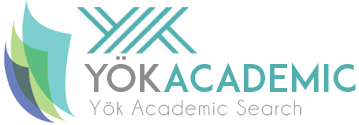Research Article
Letter to Editor
Issue Reviewers
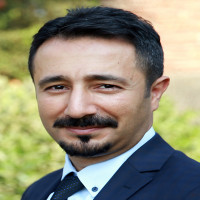

Ankara’da 1978 yılında matbaa işletmecisi bir ailenin ilk çocuğu olarak doğmuştur. İlk ve ortaokul öğretimini Yükseliş Koleji’nde almıştır. Annesi tarafından sanata yönlendirilmiştir. Birçok ulusal ve uluslararası çocuk resim yarışmasında dereceler kazanmıştır. Babasından ilk grafik ve baskı eğitimini almıştır. Sanata olan ilgisi lise döneminde de devam etmiştir. Ankara Anadolu Güzel Sanatlar Lisesi Resim Bölümü’nde 1997 yılında mezun olmuştur. Aynı yıl Hacettepe Üniversitesi Güzel Sanatlar Fakültesi Grafik Bölümü’nü birincilikle kazanmıştır. Üniversitede öğrenci olduğu dönemde Ankara’da reklam ajanslarında grafik tasarımcı ve sanat yönetmeni olarak çalışmıştır. 2001 yılında lisans eğitimini bölüm ve fakülte birincisi olarak bitirmiştir ve yüksek lisans çalışmasına başlamıştır. 2003 yılında Başkent Üniversitesi Güzel Sanatlar Fakültesi’nin kuruluş aşamasının Grafik Bölümü ayağında bulunmuştur. 2004 yılında askerlik görevi nedeniyle akademik çalışmalarına ara vermiştir. Askerlik görevi sonrası akademiye dönmeyerek babasının vefatından kalan aile işletmesi Onur Matbaacılık Ltd Şti’nin başına geçmiştir.
Devraldığı şirketi yeniden yapılandırmıştır. Markalaşma süreci için yol haritası oluşturmuş ve kurum kimliğini yenilemiştir. Yaptığı Ankara’nın ilk “sıfır” Koenig & Bauer Performa 5 renk ofset baskı makinası yatırımı ile şirketin adını Onur Yeni Baskı olarak güncellemiştir. Bu dönemde grafik tasarım alanına hizmet edecek olan “O” adlı şirket bültenini yayınlamaya başlamıştır ancak uzun soluklu olamamıştır. 2010 yılında Canon baskı sistemlerine yatırım yaparak sadece dijital baskı yapan Ankara’nın ilk dijital matbaası Opus Basımevi’ni kurmuştur.
2013 yılında gelen davetle Hacettepe Üniversitesi GSF Grafik Bölümü’nde misafir öğretim görevlisi olarak dersler vermeye başladı. Akademiye dönüşüyle yarım kalan yüksek lisans tezini Prof. Dr. İncilay YURDAKUL danışmanlığında tamamlamıştır. TAŞIT GRAFİĞİ UYGULAMALARI ve AMBULANS FORMA TASARIMI adlı yüksek lisans tezi taşıt ve grafik ilişkisini irdeleyen ilk akademik çalışma olmuştur. Tez taşıtlarda grafik kullanımını sınıflandırmakta ve çağdaş bir ambulans için tasarım önerisinde bulunmaktadır. Hacettepe Üniversitesi’nde ders yürüttüğü süreçte Gazi Üniversitesi, Çankırı Karatekin Üniversitesi, Selçuk Üniversitesi ve Atılım Üniversitesi’lerinin Grafik Tasarım ve Görsel İletişim Bölümleri’nde Proje, Tipografi, Ambalaj Tasarımı, Alan Uygulama, İletişim, Reklam, Sanat ve benzer birçok dersleri yürütmüştür. 2018 yılında tüm ticari faaliyetlerini bırakarak tamamen akademiye geçmiştir ve Başkent Üniversitesi Güzel Sanatlar Tasarım ve Mimarlık Fakültesi Grafik Bölümü’ne öğretim görevlisi olarak atanmıştır. 2019 yılında Hacettepe Üniversitesi GSF Grafik Bölümü’nde Prof. Namık Kemal SARIKAVAK danışmanlığında KARMA GERÇEKLİKTE ÇOKLU MEKAN TASARIMI adlı doktora çalışmasını tamamlamıştır. Tez artırılmış gerçeklik, sanal gerçeklik ve karma gerçeklik kavramlarını sınıflandırmakta ve paralel evrenler hipotezinden yola çıkarak tek bir fiziki gerçek mekanın aynı anda birçok farklı sanal mekanlar olarak kullanılmasının tasarımını içermektedir. Bu çalışma ülkenin karma gerçeklik üzerine yapılan ilk doktora çalışması olmuştur. Doktora çalışmasını bitirmesiyle Dr. Öğretim Üyesi olarak atanmıştır. 2020 yılında Başkent Üniversite’ndeki görevinden istifa etmiştir ve Selçuk Üniversitesi Güzel Sanatlar Fakültesi Grafik Bölümü’ne Dr. Öğretim Üyesi olarak atanmıştır. 2022 yılında UAK tarafından doçent derecesi verilmiştir. Halen aynı kurumda çalışmaya devam etmektedir.
Akademiye dönüşü sanatsal çalışmalarına da dönmesini sağlamıştır. 2016 yılında İKSV’nin düzenlediği İstanbul Tasarım Bienali’nde AUTOGRAPHSY/OTOGRAFSİ adını verdiği kendini temsil eden bir kitaba otopsi yaptığı video art çalışması açık çağrı birinciliğini paylaşmıştır. 2018 yılında GAMUT adlı baskı skalalarından yaptığı zaman ve mekan öğrüntüsünü işleyen 5 metrelik yerleştirmesi Akbank Günümüz Sanatçıları Sergisi’nde birinciliği paylaşmıştır. 2021’de 40. GMK GRAFİK TASARIM SERGİSİ’ne seçilen OPUS üçlüsü baskıdaki analogdan dijitale dönüşüme işaret eden poster tasarımlarıdır. Baskı resim, poster tasarımları ve sanatsal çalışmaları ulusal ve uluslararası sergilerde seçili sergilemiştir. 7 adet kişisel solo sergi açmıştır. 2017’de ilk kişisel sergisi H.Ü. Grafik Bölümü’nde WHEREDEYİM? ticari, akademik ve sanatsal çalışmalarının karmasından oluşmaktadır ve nerede olduğu sorusuna kişisel bir bakıştır. MONTAJ/MONTAGE adlı ikinci sergisi Galeri Soyut’ta açılmıştır. Gerçek, suret ve sahte kavramlarını sorgulayan işler matbaa filmlerinden oluşan birleştirmelerdir. Sergi, tekniğiyle baskı öncesi analog dönemin bellek tazelemesini yaparken gerçekten ayrılamayacak suretler yapabilen ustalara hayranlık beslemektedir. 2019 yılındaki üçüncü sergisi BİR ZAMANLAR ANADOLU’DA Anadolu Güzel Sanatlar Lisesi’nde başlayan sanat öğreniciliğinden sanat öğreticiliğine Anadolu’da evrilen hayatından kesit işler içermektedir. 2020 yılında MOTION GRAPHICS adlı dördüncü sergisini açmıştır. Saniyelik, dakikalık, saatlik hareket eden grafik öğelerden oluşan kompozisyonlara sahip tasarımları aynı şekilde bir daha görmek mümkün değildir. Sergi zaman ve mekanın değişkenliğini sorgulamaktadır. 2020 yılında Atılım Üniversitesi’nde açılan POSTER-A-MA sergisi adını 60’lı yıllarda ABD’yi kamyonlar üzerinde gezen GM’in gelecekçi panayırı FUTUR-A-MA’sından ve geniş bir perspektifte bakış açısı sunan PANOR-A-MA tekniğinden almaktadır ve geniş bir poster seçkisinden oluşmaktadır. 2021’de Covid-19 Salgını sırasında gerçekleştirdiği SMALL BİZ’NESS sergisi çevrimiçidir. Mahalle ve küçük esnaf kavramları üzerine kurulu sergi fotografik çalışmalarından oluşmaktadır. Cadde üzerinde hareket ederken önünden geçip gidilen esnaf camekanları film karelerini çağrıştırırken cadde geçip giden hayatı temsil etmektedir. 2022 yılı sonunda gerçekleştirdiği POSTER-A-MA-22 Selçuk Üniversitesi’ne geçtikten sonraki poster tasarımlarını da içeren güncellenmiş POSTER-A-MA’dır.
Tasarım ve sanat alanlarıyla beraber yayında üretmektedir. Bugüne kadar özgün nitelikte 10 adet uluslararası bildiri 5 adet hakemli makale yayınlamıştır. İlgi alanlarının çeşitliliği ve disiplinlerarası bakış açısıyla makale ve bildirileri oldukça geniş bir konu alanına yayılmaktadır. EKOLOJİK VE EKONOMİK FAYDA MODELİ OLARAK A4 FORMAT YERİNE B4 FORMAT KULLANIMI adlı bildirisi çevreci bir tüketim için öneri getirmiştir. ANKARA ESKİ BİNA İSİMLİKLERİNİN GRAFİK TASARIM DEĞERLENDİRİLMESİ adlı bildirisi tipografi üzerine bir grafik arkeoloji olmuştur. Paris’te sunduğu DEĞİŞKEN VERİLİ AMBALAJ TASARIMI ile GÜNCEL SANATTA GRAFİK TASARIM VE ÜRETİMİ TEKNİKLERİ bildirileri grafik tasarımın güncel sanat ve ambalajla ilişkisini araştırmaktadır. YIL MİLYON’DA MATBAA bildirisi yakın gelecek için basım teknolojilerine fütüristik bir önerme sunmaktadır. SANATSAL İFADE BİÇİMİ OLARAK AMBALAJ bildirisi ambalajın sanata dahiliyetine işaret etmektedir. ÇEVRİMİÇİ BİR DÜNYADA ÇIKARIMSAL (ANALOG) RENK SİSTEMİ YERİNE TOPLAMSAL (DİJİTAL) RENK SİSTEMİ KULLANIMI bildirisi renk eğitiminde pigment boyalar gibi ışık kaynaklı renk eğitiminin de verilmesi gerektiğini söylemektedir. KARMA GERÇEKLİK EVRENİNDE SİMÜLASYON ETİĞİ bildirisi sanal bir dünyanın yeni etik değerlere sahip olması gerekeceği uyarısını yapmaktadır. ARTIRILMIŞ GERÇEKLİK SORUNLARI ve SANAL GERÇEKLİK SORUNLARI bildirileri her iki kavramın adlandırma, tanımlandırma, kullanım ve sağlık sorunlarını sıralamaktadır.
LA CASA DE PAPEL OTOGRAFSİSİ makalesi dizide geçen soygunu kendi deneysel otografsi tekniği merceğinden incelemektedir. ÇAĞDAŞ SANAT MÜZESİ ÖNERİSİ OLARAK ANAFARTALAR ÇARŞISI müzesi başkentin çağdaş sanat müzesi eksiğinin Ulus’ta bulunan çok katlı eski bir çarsının yeniden işlevlendirilerek giderilebileceği önermesinde bulunmaktadır. TAŞIT GRAFİĞİ İNCELEMESİ ve TASARIM ÖNERİSİ OLARAK POLİS OTOSU makalesi yüksek lisans çalışması konusunda çağdaş ve özgün tasarım önerisi getirmektedir. Doktora çalışma konusuna paralel olarak ARTIRILMIŞ GERÇEKLİK, SANAL GERÇEKLİK VE KARMA GERÇEKLİK KAVRAMLARINDA İSİMLENDİRME VE TANIMLANDIRMA SORUNLARI ile A STRANGE CONCEPT ARISING IN THE COVID-19 PANDEMIC: SANAL SERGİ makaleleri gerçeklikler ve kullanımları üzerinedir.
Tasarım ve sanatta yoğun bir deneysellik içeren çalışmaları konu ve nitelikleriyle çağdaş standartlardadır ve geniş bir alana yayılmıştır. Ağırlıkla poster, baskı resim ve heykel üretmektedir. Çalışmalarında sayısal ortamda düzenlenmiş tasarımlara gerçek nesneler eşlik ekmektedir. Tasarım dili matbaa baskı öncesi görsel simgelerinden ve baskının üst üste yapılan çok katmanlı yapısından oluşmaktadır. Baskı skalaları, krosları, kesim çizgileri, kırmızı montaj bantları kimi zaman çalışmanın içinde unutulmuş gibi montaj milimetrik kağıdının üzerinde durmaktadır. Çalışmaları geneliyle brutal özelliktedir.
Sanallık ve baskı resim üzerine buluşlar yapmıştır. 4 adet patent çalışması bulunmaktadır. Bunların iki adeti karma gerçeklik mekan tasarımı ve trafiği üzerine ve iki adeti baskı resimde kullanılacak yeni bir baskı şekli ve oyma aleti üzerinedir.
Uluslararası Sanat Eleştirmenleri Derneği (AICA) Türkiye Şubesi, Grafik Tasarımcılar Meslek Kuruluşu (GMK) ve İstanbul Ekslibris Derneği (İED) derneklerine üyedir. Akademisyen Dr. Seçil Ermiş İpek ile evlidir ve Duru Luna İpek’in babasıdır.


Doç. Dr. Ulaş Işıklar 1977’de Kırklareli’nde doğdu. Lisans öğrenimini Ege Üniversitesi İletişim Fakültesi Radyo TV Sinema Bölümü’nde bitirdikten sonra, yüksek lisans ve doktorasını aynı üniversitede sinema üzerine yaptı. İstanbul Beykent Üniversitesi Güzel Sanatlar Fakültesi Sinema TV (İngilizce) Bölümü’nde öğretim üyesi olarak görev yapmaktadır.
Birçok kısa film, video-klip, tanıtım ve eğitim filminin yönetmenliğini yaptı. “Nemesis; Ölüler Valsi” adlı kısa filmle Ege Üniversitesi 2003 kısa film yarışması kurmaca kategorisinde Birincilik ve Selçuk Üniversitesi 2003 kısa film yarışması Jüri Özel ödülü, “Shtriga; Bir Vampir Rüyası” adlı kısa filmle Ege Üniversitesi 2004 kısa film festivalinde En İyi Film ödüllerini kazandı. Birçok televizyon dizi ve programının yanı sıra, sinema filmi ve belgesel projelerinde de çeşitli görevler aldı.
2010’da “Gecenin Çocukları: Son Dönem Korku Sinemasında Vampir Karakterinin Dönüşümü” adlı akademik sinema kitabı yayımlandı. Sinemayla ilgili pek çok kitap ve dergide akademik makaleleri yer aldı. İlk romanı “Gece Gelen” 2013’te yayımlandı. Nietzsche, Camus ve Sartre felsefelerinden ipuçları barındıran ikinci romanı “Karasinek” 2020’de, varoluşçu bir Trakya anlatısı olan üçüncü romanı “39 Merkez; Bir Trakya Kentinde Kısa Film Çekmenin Aşırı Acıklı ve Pek Gülünç Hikâyesi” 2021’de yayımlandı. Aynı yıl, “Nuri Bilge Ceylan Sinemasında Nihilizm” başlıklı akademik sinema kitabı yayımlanmıştır.
“Demirkubuz: Yolu Yok! Çekeceksin…” isimli akademik sinema kitabı ise 2024’te yayımlandı. Hâlihazırda sinema-felsefe alanında tamamladığı doktora tezine uygun şekilde, ‘felsefi’ temaları irdelediği edebi metin ve senaryo yazma çalışmalarını sürdürmekte, ayrıca lisans düzeyinde “Advanced Script Writing”, “Cinematography”, “Film Production”, yüksek lisans düzeyinde ise “Sinema ve Diğer Mecralar” ve “Kültürel Film Eleştirisi” derslerini vermektedir.

İrem Çoban, lisansını Galatasaray Üniversitesi İletişim Fakültesi’nde birincilikle, yüksek lisansını yine Galatasaray Üniversitesi Medya ve İletişim Çalışmaları tezli yüksek lisans programında yüksek dereceyle tamamlamıştır. Lisansı boyunca Galatasaray Üniversitesi Tasarım Atölyesinde tasarımcı olarak birçok afiş, dergi ve kitap tasarımları yapmıştır. ABD, Japonya, İtalya, İngiltere, Kanada, Almanya, İngiltere, Türkiye, Güney Kore, Bulgaristan gibi dünyanın çeşitli ülkelerinde karma sergilere, festivallere ve workshoplara katılmıştır. İtalya Lecce’de bulunan Primo Piano LivingGallery’nin düzenlediği Art Woman 2020 Geo-Graphies sergisinde, “Tell me my future” video çalışmasıyla en iyi teknik uygulama ödülünü kazanarak Gümüş Sertika almaya hak kazanmıştır. Bir çocuk gelin hikayesini deneysel biçimde işleyen “Duy” isimli kısa filmi, çeşitli uluslararası festivallerin gösterim seçkilerine seçilmiştir. Maltepe Üniversitesi Güzel Sanatlar Ana Sanat Dalı’nda Sanatta Yeterlik Programını yüksek onur derecesiyle tamamlamıştır. Tez çalışması, Uluslararası Kısa Film Platformu’nun düzenlediği festivalde Mart 2020 tarihinde Kadın Konulu Doktora Tezi Araştırma Bursu ödülünü almıştır. Tez çalışması olarak çektiği “Son Performans” isimli kısa filminin festival süreci devam etmektedir. Çoban, İstanbul Bilgi Üniversitesi’nde Doktor Öğretim Üyesi olarak sürdürdüğü akademik kariyerinin yanı sıra sanatsal çalışmalarına da devam etmektedir. 2021 yazında İngiltere Londra merkezli Agora Digital Art Residency süresince ürettiği eserler, “Women in Proverbs” başlığı ile mimarisi Metaxu Studio tarafından hazırlanan devamlı bir solo sanal gerçeklik sergisinde sergilenmektedir. Barcelona’da yer alan Espronceda - Sanat ve Kültür Enstitüsü tarafından düzenlenen IMMENSIVA Residence 2022 içerisinde sanatçı olarak yer almaya hak kazanmıştır. 1-12 Ağustos 2022 tarihleri arasında gerçekleşen İstanbul XR Art Residency'nin mentorlarından biridir. Eylül 2022’de "The Holy Fetus Temple" isimli dijital modelleme-görsel çalışmasıyla 18. ADAF | FutuRetro online edisyonuna seçilmiştir. Dünyanın ilk NFT Bienali’nde çalışmasıyla yer almıştır. Mayıs 2023’te Eugeniusz Geppert Academy of Art and Design in Wrocław Polonya’da misafir öğretim üyesi olarak Gravity Sketch atölyeleri vermiştir. 16-24 Haziran 2023 tarihleri arasında Maltepe Üniversitesi Mehmet Özen Sanat Galerisi’nde “LOA” isimli ikinci kişisel video sergisini açmıştır. 17 ve 24 Haziran 2023 tarihlerinde Facebook Maslak İstasyonu’nda düzenlenen META SPARK HACKATHON’da sanatsal koordinatör ve Gravity Sketch atölye mentoru olarak yer almıştır. Ayrıca Londra merkezli Sedition Art Platform’unun sanatçılarından biridir. "Chasing the Hidden" ve "Spiritual Purification" adlı iki eser koleksiyonu bulunmaktadır.
Aim & Scope
Our aim is to create a common academic platform from different disciplines in the fields of Fine Arts and Design.
Articles on plastic arts, graphic design, visual communication design, cartoon animation, new media, architecture, interior architecture, urban design, art education, art history, art philosophy and sociology, cinema and television, gastronomy and culinary arts, fashion and textile design, performing arts, are accepted to ART/icle: Journal of Art & Design.
The article evaluation process in our journal is 60 days. Each article will be evaluated by at least two referees with a doctorate, and when there is an equality, such as an acceptance or a rejection, the third referee opinion will be requested. All processes will be carried out by the double blind method.
Author Guidelines
Ethical Principles and Publication Policy
ART/icle: Journal of Art & Design, (ISSN: 2718-1057 & e-ISSN: 2791-7665) was founded in 2020. ART/icle: Journal of Art & Design will be published by Istanbul Gelişim University Faculty of Fine Arts, twice a year, in June and December. It is an International Academic Refereed Journal. It will operate in accordance with the open access philosophy. Our aim is to create a common academic platform from different disciplines in the fields of Fine Arts and Design. The language of the journal is Turkish and English.
The article evaluation process in our journal is 60 days. Each article will be evaluated by at least two referees with a doctorate, and when there is an equality, such as an acceptance or a rejection, the third referee opinion will be requested. All processes will be carried out by the double blind method. iThenticate, Turnitin and intihal.net programs are used in online plagiarism reporting. No fees will be charged from the authors at any stage.
Articles on PLASTIC ARTS, GRAPHIC DESIGN, VISUAL COMMUNICATION DESIGN, CARTOON ANIMATION, NEW MEDIA, ARCHITECTURE, INTERIOR ARCHITECTURE, URBAN DESIGN, ART EDUCATION, ART HISTORY, ART PHILOSOPHY AND SOCIOLOGY, CINEMA AND TELEVISION, GASTRONOMY AND CULINARY ARTS, FASHION AND TEXTILE DESIGN, PERFORMING ARTS are accepted to ART/icle: Journal of Art & Design.
ART/icle: Journal of Art & Design’s registered editors and reviewers are responsible for ensuring the quality of the published papers and the contribution to the academia fully committed to fulfilling the ethical responsibilities that are set by COPE (http://publicationethics.org/resources/guidelines.)
Section A: Publication and authorship
1. The double blind method is applied.
2. All submitted papers are under strict peer-review process by at least two international reviewers who are specialized in the area.
3. The papers are only taken into account in review process in terms of their significance, uniqueness, readability, contribution, signification, relevance, and language.,
4. It is not possible to re-review rejected papers.
5. The decision process contains acceptance, acceptance with revisions, or rejection.
6. If an author gets revision or resubmission for the paper, it is not certain that the revised version will be accepted or published.
7. The paper acceptance is constrained by such legal requirements as copyright infringement and plagiarism.
8. Submitting the same paper to different journals is not acceptable.
Section B: Authors’ responsibilities
1. All Authors mentioned in the paper must have significantly contributed to the research. All authors must contribute to the research.
2. All authors must confirm that their research is original. Plagiarism is not acceptable.
3. All authors must confirm that the paper has not been published in any other journals.
4. All authors must report any mistakes that are in the published paper.
5. All authors must confirm that the paper has not been submitted for other journals’ review process.
6. All authors must provide corrections and retractions of the paper.
7. All authors must state that all relevant data that are in mentioned in the paper are genuine and real.
8. All authors must inform the Editors about the conflict of interest.
9. All authors must participate in the peer-review process.
10. All authors must cite the sources that are used in the research.
Section C: Reviewers’ responsibilities
1. Reviewers must define non-cited and relevant sources in the paper.
2. Reviewers must mind that all papers’ information is confidential.
3. Reviews should be objective.
4. Reviewers must notify the Editors about any similarity in the paper among other papers.
5. Reviewers must declare their opinions regarding supporting objectives.
6. Reviewers must be equal to all authors, but if there are conflicts of interest resulting from personal views, the reviewer should not review the paper.
Section D: Editors’ responsibilities
1. All Editors must guarantee the integrity of the academic level and the papers’ quality.
2. All Editors should be determined about their decisions and should not overturn the decisions.
3. All Editors should mind the confidentiality of the reviewers.
4. All Editors are responsible for the quality of the submitted papers’ content.
5. All Editors must mind the authors and the regarding readers’ requests.
6. All Editors must make literal corrections if it is necessary and publish these corrections.
7. All Editors should be clear and controllable about the funding sources that contribute to the journal.
8. All Editors should make their decisions based on the uniqueness, clearness, relevance, and language of the submitted research.
9. All Editors must be certain that all published researches correspond to the international guidelines.
10. All Editors are responsible for rejecting or accepting the papers.
11. All Editors should involve in any malpractice in the journal or the process of publishing and also should take action.
12. All Editors should be transparent in accepting papers and should have proof to present.
13. All Editors must ensure that there are no conflicts of interest between editors, paper authors, reviewers, and editorial board.
14. All Editors should be selective in the process of accepting the papers.
Price Policy
No fees will be charged from the authors any stage.
Indexes
Other Indexes
Journal Boards
Owner on behalf of Istanbul Gelisim University

Prof. Dr. Bahri Şahin, Lisans eğitimini 1977 yılında Gazi Üniversitesi Makina Mühendisliği Bölümünde,Yüksek Lisans eğitimini 1979 yılında Tübitak bursiyeri olarak Yıldız Teknik Üniversitesi (YTÜ) Fen Bilimleri Enstitüsü Makina Mühendisliği Anabilim Dalı Enerji Programında, Doktora eğitimini ise 1985yılındaTübitak Şeref bursiyeri olarak İstanbul Teknik Üniversitesi (İTÜ)Nükleer Enerji Enstitüsü Nükleer Teknoloji Programında tamamlamıştır. YTÜ Makine Mühendisliği Bölümü Enerji Anabilim Dalında 1979-1983 yıları arasında Araştırma Görevlisi, 1983-1986 yıları arasında Öğretim Görevlisi olarak görev yapan Prof. Dr. Bahri Şahin, 1986-1989yılları arasında YTÜ Gemi İnşaatı ve Gemi Makineleri Mühendisliği Bölümünde Yardımcı Doçent, 1989-1995 yılları arasında Doçent olarak görev yapmış ve 1995 yılından beri Profesör olarak görevini sürdürmektedir. Prof. Dr. Bahri Şahin, Yıldız Teknik Üniversitesi'nde 1988-1999 yılları arasında Bölüm Başkan Yardımcılığı, 1992-2007 yılları arasında Anabilim Dalı Başkanlığı, 1999-2009 yılları arasında Bölüm Başkanlığı ve 2009-2016 yılları arasında YTÜ Gemi İnşaatı ve Denizcilik Fakültesi Kurucu Dekanlığı görevini üstlenmiştir. Ayrıca 2010 yılında Birleşmiş Miletler Sınai Kalkınma Örgütü(UNIDO),Uluslararası Hidrojen Teknolojileri Merkezi (ICHET)Yönetim Kurulu Üyeliğine seçilerek bu görevi 2013 yılına kadar sürdürmüştür. Termodinamik, Enerji Üretim Sistemleri, Enerji Teknolojileri, Termal Sistemlerin Dizaynı ve Optimizasyonu ve Enerji Ekonomisi alanlarında çok sayıda uluslararası çalışmaları bulunan Prof. Dr. Bahri Şahin, TÜBİTAK Bilim Kurulu’nun 06.10.2012 tarih ve 212 sayılı toplantısında alınan karar ile Türkiye Bilimler Akademisi (TÜBA) asli üyeliğine seçilmiş olup TÜBA-GEBİP Mühendislik Ödülleri Komitesi Başkanlığını yürütmüş ve komisyon üyesi olarak görevine devam etmektedir. Prof. Dr. Bahri Şahin 2016-2020yıları arasında Yıldız Teknik Üniversitesi rektörü olarak görev yapmıştır. 2022 yılından itibaren İstanbul Gelişim Üniversitesi rektörü olarak görevini sürdürmektedir.
Journal Editorial Board
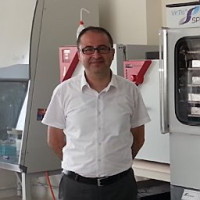
Doç. Dr. Murat Doğan
Aşçılık ön lisans, Gıda Mühendisliği ve İşletme lisans, Biyoloji ve Beslenme ve Diyetetik yüksek lisans, Gıda Mühendisliği ve Yönetim ve Strateji doktora eğitimlerini tamamlamıştır. Gıda sektöründe on üç yıl sırasıyla işletme müdür yardımcılığı, üretim sorumluluğu, üretim müdürlüğü ve operasyon bölge müdürlüğü görevlerinde bulunmuştur. Bununla birlikte firmalara kalite, gıda ve iş güvenliği konularında yönetim danışmanlığı hizmeti vermiştir.
Akademik alanda ise yedi yıl sırasıyla Haliç Üniversitesi, Gıda Teknolojisi Programında ve İstanbul Yeni Yüzyıl Üniversitesi, Beslenme Diyetetik Bölümünde öğretim görevlisi, öğretim üyesi ve bölüm başkanlığı görevlerinde bulunmuştur. Son altı yıldır İstanbul Gelişim Üniversitesi, Güzel Sanatlar Fakültesi, Gastronomi ve Mutfak Sanatları Bölümünde öğretim üyesi ve aynı zamanda fakültenin dekan yardımcısıdır. TÜBİTAK’ın desteklediği birçok projede araştırmacı ve danışman olarak görev almıştır. Gıda, beslenme, gastronomi ve yönetim alanlarında akademik ve sektöre yönelik çalışmalar yürütmektedir.
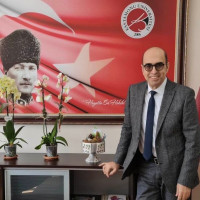
Editor

Doç. Dr. Murat Doğan
Aşçılık ön lisans, Gıda Mühendisliği ve İşletme lisans, Biyoloji ve Beslenme ve Diyetetik yüksek lisans, Gıda Mühendisliği ve Yönetim ve Strateji doktora eğitimlerini tamamlamıştır. Gıda sektöründe on üç yıl sırasıyla işletme müdür yardımcılığı, üretim sorumluluğu, üretim müdürlüğü ve operasyon bölge müdürlüğü görevlerinde bulunmuştur. Bununla birlikte firmalara kalite, gıda ve iş güvenliği konularında yönetim danışmanlığı hizmeti vermiştir.
Akademik alanda ise yedi yıl sırasıyla Haliç Üniversitesi, Gıda Teknolojisi Programında ve İstanbul Yeni Yüzyıl Üniversitesi, Beslenme Diyetetik Bölümünde öğretim görevlisi, öğretim üyesi ve bölüm başkanlığı görevlerinde bulunmuştur. Son altı yıldır İstanbul Gelişim Üniversitesi, Güzel Sanatlar Fakültesi, Gastronomi ve Mutfak Sanatları Bölümünde öğretim üyesi ve aynı zamanda fakültenin dekan yardımcısıdır. TÜBİTAK’ın desteklediği birçok projede araştırmacı ve danışman olarak görev almıştır. Gıda, beslenme, gastronomi ve yönetim alanlarında akademik ve sektöre yönelik çalışmalar yürütmektedir.
Assistant Editors
Director of Editorial Office

Doç. Dr. Murat Doğan
Aşçılık ön lisans, Gıda Mühendisliği ve İşletme lisans, Biyoloji ve Beslenme ve Diyetetik yüksek lisans, Gıda Mühendisliği ve Yönetim ve Strateji doktora eğitimlerini tamamlamıştır. Gıda sektöründe on üç yıl sırasıyla işletme müdür yardımcılığı, üretim sorumluluğu, üretim müdürlüğü ve operasyon bölge müdürlüğü görevlerinde bulunmuştur. Bununla birlikte firmalara kalite, gıda ve iş güvenliği konularında yönetim danışmanlığı hizmeti vermiştir.
Akademik alanda ise yedi yıl sırasıyla Haliç Üniversitesi, Gıda Teknolojisi Programında ve İstanbul Yeni Yüzyıl Üniversitesi, Beslenme Diyetetik Bölümünde öğretim görevlisi, öğretim üyesi ve bölüm başkanlığı görevlerinde bulunmuştur. Son altı yıldır İstanbul Gelişim Üniversitesi, Güzel Sanatlar Fakültesi, Gastronomi ve Mutfak Sanatları Bölümünde öğretim üyesi ve aynı zamanda fakültenin dekan yardımcısıdır. TÜBİTAK’ın desteklediği birçok projede araştırmacı ve danışman olarak görev almıştır. Gıda, beslenme, gastronomi ve yönetim alanlarında akademik ve sektöre yönelik çalışmalar yürütmektedir.
Field Editors
Contributory
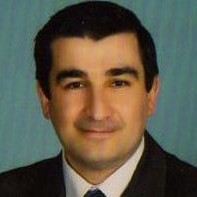
I work as the Head of the Library and Documentation Department at Istanbul Gelisim University. I am responsible for all aspects of the library's operation and its relationships with university units, institutions, and publishers. I also work at Istanbul Gelisim University Publications, which publishes numerous academic journals and books each year.
My academic research areas include Knowledge and Documentation Management, Open Access, Open Science, Archival Studies, Marketing in Libraries, and Customer Relationship Management.
Cover Design
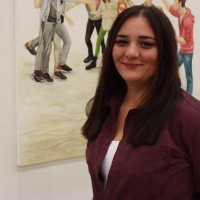
Publication Board


Doç. Dr. Murat Doğan
Aşçılık ön lisans, Gıda Mühendisliği ve İşletme lisans, Biyoloji ve Beslenme ve Diyetetik yüksek lisans, Gıda Mühendisliği ve Yönetim ve Strateji doktora eğitimlerini tamamlamıştır. Gıda sektöründe on üç yıl sırasıyla işletme müdür yardımcılığı, üretim sorumluluğu, üretim müdürlüğü ve operasyon bölge müdürlüğü görevlerinde bulunmuştur. Bununla birlikte firmalara kalite, gıda ve iş güvenliği konularında yönetim danışmanlığı hizmeti vermiştir.
Akademik alanda ise yedi yıl sırasıyla Haliç Üniversitesi, Gıda Teknolojisi Programında ve İstanbul Yeni Yüzyıl Üniversitesi, Beslenme Diyetetik Bölümünde öğretim görevlisi, öğretim üyesi ve bölüm başkanlığı görevlerinde bulunmuştur. Son altı yıldır İstanbul Gelişim Üniversitesi, Güzel Sanatlar Fakültesi, Gastronomi ve Mutfak Sanatları Bölümünde öğretim üyesi ve aynı zamanda fakültenin dekan yardımcısıdır. TÜBİTAK’ın desteklediği birçok projede araştırmacı ve danışman olarak görev almıştır. Gıda, beslenme, gastronomi ve yönetim alanlarında akademik ve sektöre yönelik çalışmalar yürütmektedir.



Zeynep Merve Uygun lisans eğitimini Boğaziçi Üniversitesi İngiliz Dili ve Edebiyatı, yüksek lisans eğitimini İstanbul Bilgi Üniversitesi Sinema ve TV Yüksek Lisans Programı’nda tamamlamıştır.Doktora derecesini Edinburgh Üniversitesi TransdisiplinerBelgesel Film bölümünden almıştır.Özyeğin Üniversitesi’ndeki pozisyonundan önce, İstanbul Bilgi Üniversitesi, İstanbul Şehir Üniversitesi ve Koç Üniversitesi’nde belgesel sinema, dijital hikaye anlatıcılığı ve video üretimi üzerine dersler vermiştir.
Uluslararası film atölyelerinde ve festivallerde mentör, eğitmen ve jüri üyesi olarak görev alan Uygun’un, IN OUT ve Zigzag gibi animasyonve deneyselbelgeselleri, başta Cannes, Altın Portakal, IFolmak üzere 50’nin üstünde film festivalinde gösterilmiş ve pek çok uluslararası ödüle layık görülmüştür. Uygun’un akademik ilgi alanları arasında belgeselde mekan ve bedenin görsel temsili, dijital etnografi ve yeni medya belgeselleri (interaktif belgesel, dijital hikaye anlatıcılığı, transmedya belgesel vb) yer almaktadır.
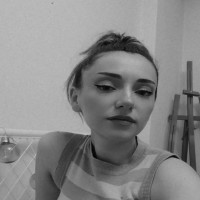
I am an urban planner and hold a Ph.D. in Urban Planning from Mimar Sinan Fine Arts University (Istanbul, Turkey). Since 2015, I have been working as a research assistant at Istanbul Gelisim University, Fine Arts Faculty, Interior Architecture and Environmental Design Department. I hold a BSc in City and Regional Planning (2015) and an MSc in Urban Transformation and Planning (2018) from Yıldız Technical University (Istanbul, Turkey). My master’s thesis is titled: “Airbnb as a Global Factor that Triggers off Gentrification: The Case of Rasimpasa Neighborhood in Kadikoy, Istanbul.”
My Ph.D. dissertation, “Housing Under Platform Capitalism: Airbnb-Mediated Housing Hyper-Commodification in Cihangir District,” examines the impact of short-term rentals on housing markets through the lens of platform capitalism and hyper-commodification.
I was a scholarship student in a three-year research project funded by The Scientific and Technological Research Council of Turkey (TUBITAK) at Yıldız Technical University (March 2018 – May 2021). The project, "Drivers and Scenarios for Reconfiguration of Historic City Centers: The Case of Beyoğlu, Istanbul” (Project Number: 117K317), analyzed the multi-layered transformation of Beyoğlu and future concerns regarding its urban dynamics.
Additionally, I conducted research on the regulation of short-term rentals in Dublin and Istanbul under the supervision of Dr. Valesca Lima at Dublin City University, School of Law and Government (2214/A International Research Fellowship for Ph.D. Students funded by TUBITAK) between January and July 2023.
My research interests focus on capitalist urbanism, neoliberal urban policies, digitalization, gentrification, touristification, housing issues, platform capitalism, short-term holiday rentals (such as Airbnb), and their role in the hyper-commodification of housing.
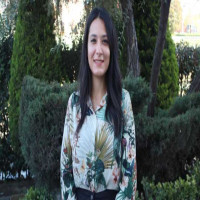
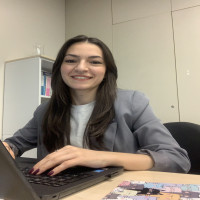
ART/icle: Journal of Art and Design
ISSN: 2718-1057
e-ISSN: 2791-7665


